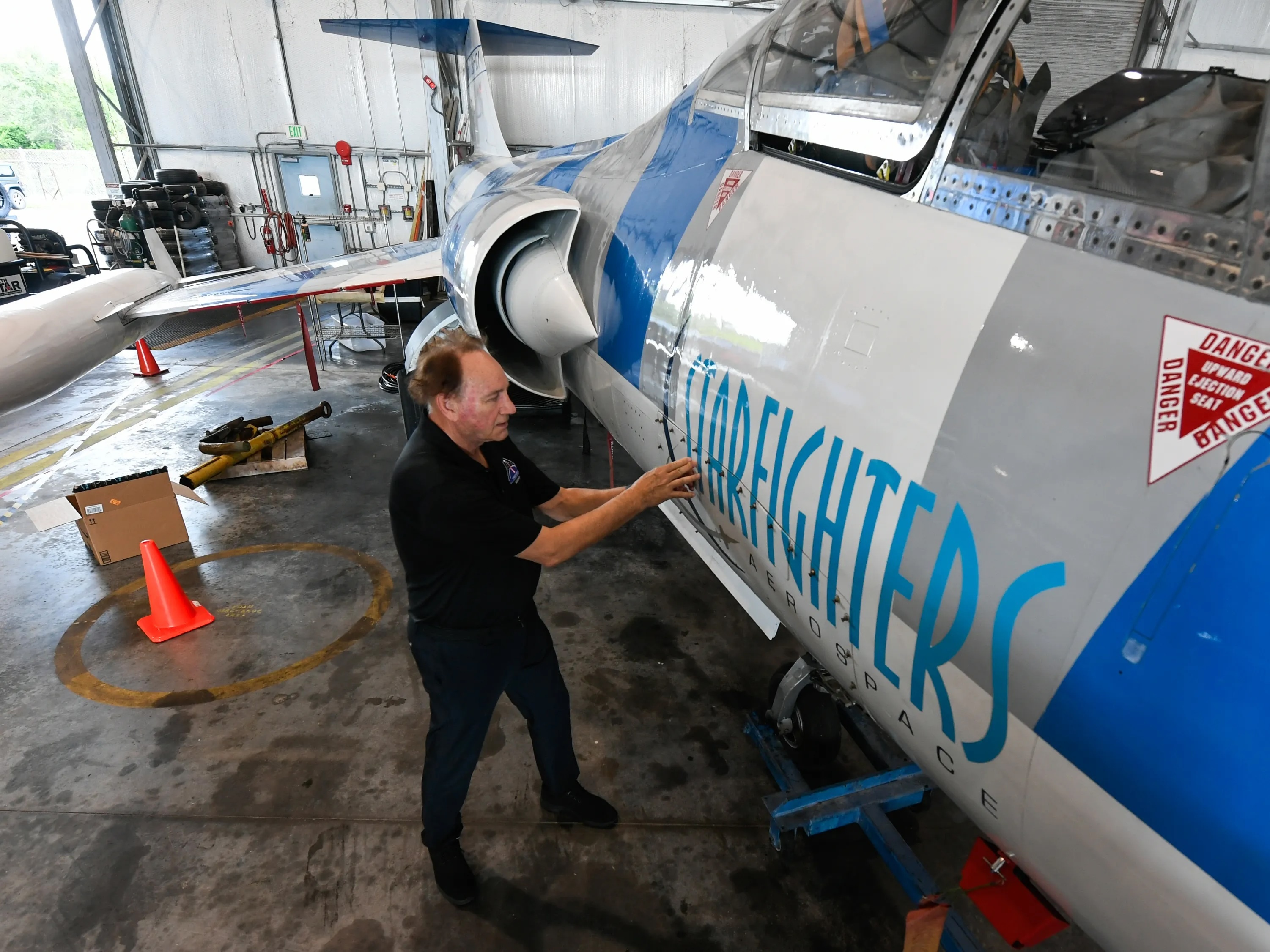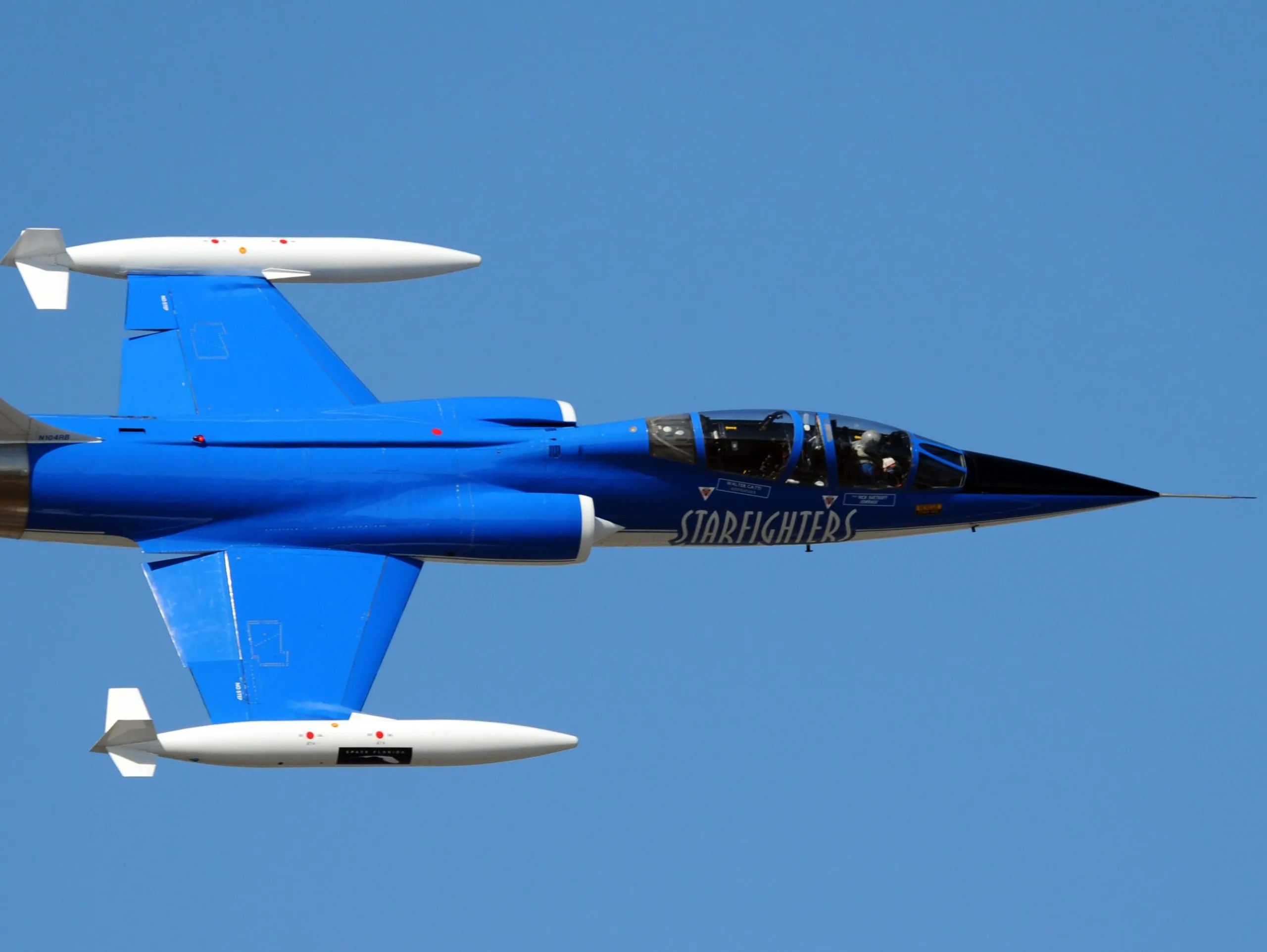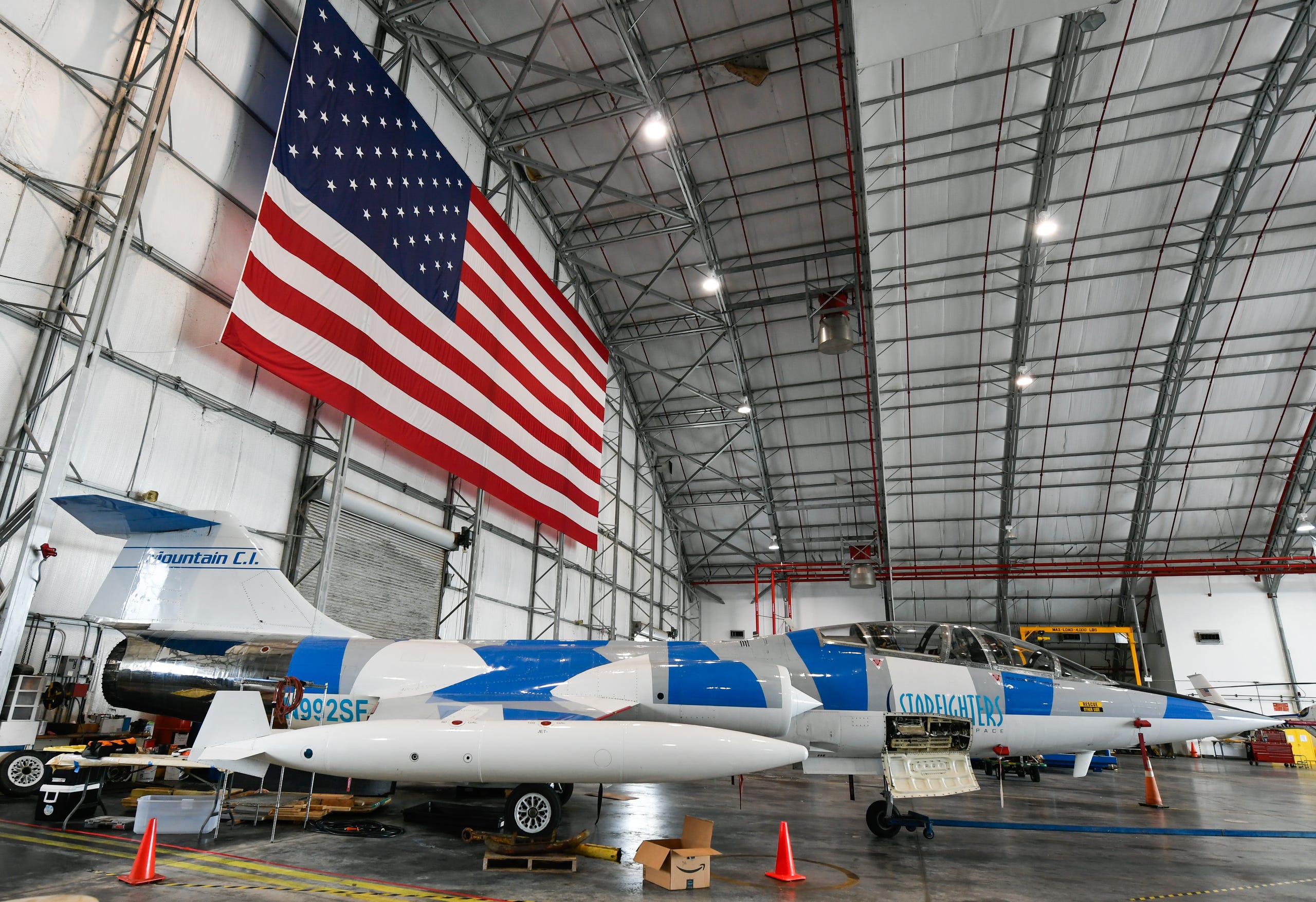26.10.2024

Starfighters Space, a company at NASA's Kennedy Space Center, plans to use its Lockheed F-104 jets to launch small satellites into low-Earth orbit.
Forget the launch pad: A Space Coast company wants to accelerate its rare supersonic aircraft to twice the speed of sound, climb up to 45,000 feet, and fire wing-mounted rockets up into low-Earth orbit, deploying small payloads of pint-sized satellites.
Straight out of science fiction? Starfighters Space, a small company that flies seven vintage Lockheed F-104 Starfighter jet interceptors at NASA's Kennedy Space Center, is testing the cost-saving concept now.
"We could actually launch these nanosats in orbit. The aircraft's capable of speeds in excess of Mach 2 — twice the speed of sound," said pilot Rick "Comrade" Svetkoff, founder and CEO.
"Right now, the military doesn't have any aircraft to expend because they're all tied up. The military's using every piece of hardware that it has, not to mention the cost factor in trying to get these fighters for any length of time. Whereas, we have aircraft to do this on a regular basis," Svetkoff said.
Starfighters Space operates the world's only commercial fleet of F-104 supersonic jet aircraft. With a small crew of 10 employees based at KSC, the company offers a unique package of services, ranging from futuristic research-development projects to flight training for pilots and astronauts.
Since 2009, the company has leased a portion of Space Florida's Reusable Launch Vehicle Hangar alongside the former space shuttle landing strip. The F-104s take flight and land on this 15,000-foot restricted-airspace runway — one of the world's longest. So do incoming astronauts aboard business jets from NASA's Johnson Space Center, including the recent SpaceX Polaris Dawn and NASA Crew-9crews.
Svetkoff said his Starfighters can serve a niche for small businesses in the fast-growing nanosatellite market by launching cheaper and faster than traditional space companies. NASA defines nanosats as weighing up to 10 kg, or 22 pounds. Airborne constellations of nanosats can be used for imaging, telecommunications, remote sensing and a host of other functions.
Svetkoff hopes to debut his first satellite-launch flights early next year, and rocket wind-tunnel tests may occur next month. He said his F-104s, which sport engines with multi-stage afterburners, can carry rockets weighing up to 1,500 pounds.
About supersonic F-104 Starfighter jets

A Starfighters-owned F-104 supersonic jet zips past the crowds during the 2014 TICO Warbird Air Show at Space Coast Regional Airport in Titusville. CRAIG BAILEY/FLORIDA TODAY
Nicknamed "the missile with a man in it," the needle-nosed F-104 Starfighter is a Cold War-era interceptor jet developed by the U.S. Air Force and flown by NATO nations. In 1958-59, the sleek aircraft shattered two world records by zooming up to 1,404 mph and climbing up to 103,395 feet. Crews built the final F-104 in 1980.
The jet's short wingspan measures less than 22 feet. Inside the KSC hangar, Svetkoff pinched the sharp leading edge of an F-104 wing, saying the metal measures a mere 1/16-inch thick.
"You can literally cut your steak with this. It's like a steak knife. Feel this," Svetkoff said, lightly touching the wing's edge. "Because of that, there's no drag. It accelerates very quick."
NASA flew more than 18,000 F-104 research flights from 1956 to 1994 at the Dryden Flight Research Center in Edwards, California. During one landmark high-speed test, a jet flew a series of shuttle thermal protection tiles through rainfall — and the "shocking" results showed raindrops had gouged and scoured much of the tiles away.
Afterward, NASA forbade shuttles from flying in known precipitation and used pathfinder aircraft to check for clouds and rain.
Now, Starfighters Space officials hope to employ the high-performance jet as the "first stage” of, essentially, a multi-stage rocket. During a November 2022 test flight, one of the F-104s flew a instrumented test rocket under its left wing for the Italian National Research Council. This rocket is designed to someday carry a suborbital payload of 20 kg, or 44 pounds.
The FAA prohibits civil aircraft from flying faster than Mach 1 over land in the United States, save missions with special flight authorization. So Svetkoff said his pilots would fly from KSC out over the Atlantic Ocean, hit Mach 2 and launch wing-mounted rockets within Space Launch Delta 45 airspace.
"It sounds perfectly doable. Hypersonic research or even low-Earth orbit is definitely feasible," said John Cain, professor emeritus with the Florida Institute of Technology's College of Aeronautics. The retired U.S. Air Force colonel has flown F-100 Super Sabres, F-16 Fighting Falcons and F-111 Aardvarks.
"The cost difference is astronomical. I mean, it's so much cheaper to launch an orbital satellite from a 104 than it is to even piggyback that satellite on a big mission out there. Big rockets: Those are very expensive. So in general terms, it's very cheap and very doable," he said.
Cain pointed out the 1985 Air Force test where an F-15A Eagle pilot launched a two-stage ASM-135A missile at 38,100 feet — and the missile destroyed a satellite in low-Earth orbit about 350 miles above the Earth's surface, according to the National Museum of the U.S. Air Force.
Texas expansion to boost supersonic testing
In a significant company expansion, Starfighters Space is also expanding at Midland International Air & Space Port in Texas. The company hopes to secure Federal Aviation Administration certification to fly Department of Defense-related supersonic research missions within a future high-speed airspace corridor between Midland and New Mexico's Spaceport America, just west of White Sands Missile Range. Both spaceports are separated by about 290 miles.
Per an economic development agreement, Starfighters Space pledges to house at least $78 million in aircraft and equipment at the Midland airport by December 2027, the Midland Development Corporation reported. The company will conduct research and test flights for defense and space-related projects, creating 23 new full-time jobs in Midland by December 2033.
"This is a significant step forward when it comes to aerospace and defense activities in Midland, as well as having some really cool pieces of aircraft that are operating out of Midland and flying out of Midland," Midland Development Corp. Executive Director Sara Harris told the Midland City Council on Sept. 24.
In a related high-speed development, Boom Supersonic won FAA approval in April to exceed Mach 1 on up to 20 flights while testing its XB-1 experimental aircraft within a supersonic corridor near Edwards Air Force Base in California.
"Their goal could be either suborbital, or it could be hypersonic research, or it could be low-Earth orbit," Cain said of Starfighters Space flights. "So there's kind of three regimes there. It's going to depend on how they build that rocket and that satellite cradle in there."
Last December, Starfighters Space announced it is contracting with GE Innoveering on hypersonic airborne testing capabilities for DoD. Former Secretary of State Mike Pompeo also toured the KSC hangar that month.
"Recent developments in Russia and China have put a new emphasis on hypersonic research and lawmakers are pressuring the DoD to more rapidly advance their research. It has been estimated that the DOD 2024 budget for hypersonic research alone will be over $145 billion," a Starfighters Space press release said.
"The national testing infrastructure is also getting old. According to Business News, a report released last year by the Government Accounting Office reported that 14 of 26 DoD, NASA and Department of Energy wind tunnels capable of supporting hypersonic research were built in the 1970s," the press release said.
F-104s to serve as rocket 'first stages'
Svetkoff flew A-4 Skyhawk fighters as a U.S. Navy pilot, and he later became a Continental Airlines pilot. He acquired his first flyable F-104 in 1996 and flew the high-performance jets on the air show circuit for about two decades.
He said the average F-104 flight only lasts about 40 minutes. His Italian-manufactured planes were rebuilt and upgraded between 1999 and 2002 — and he likened conditions inside the cramped cockpits with sitting behind the wheel of a Formula 1 race car.
Inside the hangar, two wooden-pallet loads of Dunlop tires lie stacked near a door, ready for future mounting on the three-wheeled high-speed aircraft.
"We have to order them in lots of 100. They're $1,062 apiece. And five to six landings are all they're good for. There's only one place in the world that makes them. It's over in England," Svetkoff said.
"It's an expensive operation. But there's nobody that really has the appreciable balance that can equal what we can do," he said.
Quelle: Florida Today

